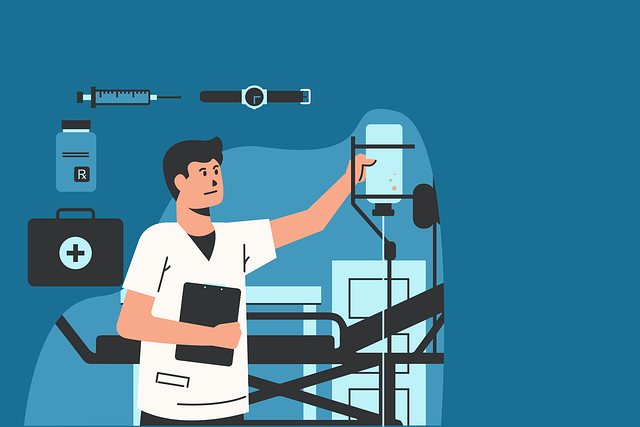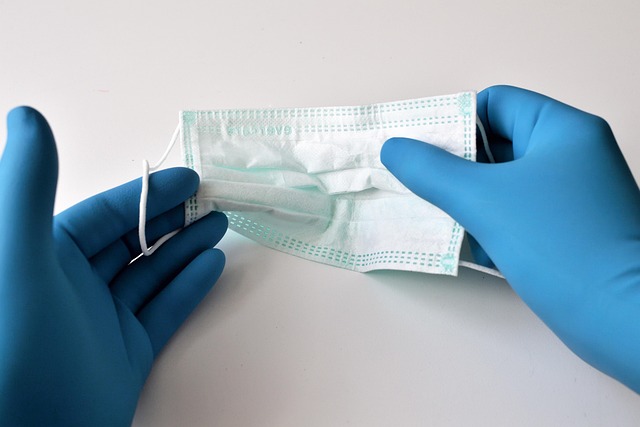Persistent warts requiring professional treatment should be handled by a certified wart removal doctor. They offer advanced options like cryotherapy and laser therapy for effective, long-lasting results. Post-treatment care involves hygiene, protection, and monitoring for potential infections.
Are you tired of dealing with stubborn warts that just won’t go away? Understanding your options is key. This comprehensive guide explores effective ways to tackle these pesky growths, highlighting the importance of seeing a certified wart removal doctor. From identifying different wart types to understanding treatment methods like cryotherapy and laser therapy, we provide insights into achieving smooth, wart-free skin. Learn about safe removal techniques and post-treatment care for swift recovery.
- Understanding Stubborn Warts: Causes and Types
- Qualifications of a Certified Wart Removal Doctor
- Effective Treatment Options for Stubborn Warts
- Non-Surgical Wart Removal Techniques Explained
- Precautions and Recovery After Wart Removal
Understanding Stubborn Warts: Causes and Types

Understanding Stubborn Warts: Causes and Types
Stubborn warts are a common skin concern that can be caused by various factors. They are typically triggered by the human papillomavirus (HPV), which infects the top layer of skin. There are several types, including common warts, which often appear on the hands and feet, and flat warts, which can develop anywhere on the body. These growths may seem harmless, but persistent or unsightly warts can significantly impact one’s self-confidence.
While over-the-counter treatments are available for wart removal, many individuals find them ineffective against stubborn cases. In such instances, consulting a certified wart removal doctor is recommended. Professional treatment options include freezing with liquid nitrogen (cryotherapy), laser therapy, and topical medications, offering more permanent solutions compared to at-home remedies. A consultation with a healthcare expert can help determine the best course of action, taking into account wart type, severity, and personal preferences, especially when considering costs like wart removal Blackpool or private wart removal Lancashire Preston.
Qualifications of a Certified Wart Removal Doctor

When searching for a certified wart removal doctor, it’s crucial to look beyond general dermatology expertise and focus on specialists who have gained extensive training in treating various types of warts. This includes understanding their qualifications such as board certification in dermatology or a subspecialty like dermatologic surgery. Experience is key; opt for doctors with a proven track record successfully removing stubborn warts using advanced techniques, from cryotherapy to laser treatments and surgical excision.
The best certified wart removal doctor should also possess excellent communication skills, ensuring patients feel comfortable and well-informed throughout the process. In light of this, consider doctors located in top-rated clinics, like those in London known for their expertise in wart removal, where advanced technology and a patient-centric approach converge. Remember, how doctors remove warts varies based on type and severity, so a qualified specialist will tailor treatments accordingly, offering hope for even the most persistent skin tags.
Effective Treatment Options for Stubborn Warts

When dealing with stubborn warts, it’s crucial to explore effective treatment options that are both safe and reliable. One surefire way to address this issue is by consulting a certified wart removal doctor. These medical professionals have the expertise and tools to diagnose and treat various types of warts, including those that resist conventional over-the-counter methods. In many cases, procedures like cryotherapy, laser treatments, or topical medications prescribed by a certified doctor can significantly improve outcomes.
For individuals in areas like Essex (Chelmsford) or Lancashire (Preston), accessing wart removal Essex Chelmsford or private wart removal Lancashire Preston services is more convenient than ever. While wart removal tips from experts can be beneficial for minor cases, stubborn warts often require the precision and knowledge of a specialized doctor to ensure complete and lasting removal.
Non-Surgical Wart Removal Techniques Explained

When it comes to removing stubborn warts, there are several non-surgical techniques available that can be effective alternatives to traditional surgical methods. A certified wart removal doctor will often recommend these options first, as they offer less invasive procedures with quicker recovery times. One such method is cryotherapy, where the warts are frozen using liquid nitrogen, causing them to shrink and eventually fall off. This private wart removal Gloucester or Leeds-based doctors can perform in their clinics is generally a quick process but may require multiple sessions for best results.
Another approach involves using topical treatments, including salicylic acid, which softens the warts before removal. This at-home method is popular due to its accessibility and affordability. However, it’s important to remember that these techniques might not be suitable for all types of warts or skin conditions, so consulting a professional is essential. For instance, people with sensitive skin or those dealing with immune system deficiencies should seek expert advice before attempting any non-surgical wart removal methods, ensuring the best and safest results.
Precautions and Recovery After Wart Removal

After a certified wart removal doctor has treated your stubborn warts, it’s important to take certain precautions to prevent reinfection and promote healing. This includes keeping the treated area clean and dry, avoiding scratching or picking at the wart, and wearing protective footwear in public places. Additionally, while some people may opt for natural treatments for stubborn warts, it’s crucial to remember that these methods might not be as effective as medical procedures and could potentially delay recovery.
The recovery process typically involves allowing the treated skin to heal completely. This usually takes a few days or weeks, depending on the severity of the warts. During this time, you should monitor the area for any signs of infection, such as redness, swelling, or discharge. If these symptoms persist or worsen, it’s essential to contact your doctor or visit a private wart removal centre in Canterbury for further evaluation and care.
When dealing with stubborn warts, seeking professional help from a certified wart removal doctor is essential for effective treatment. Understanding the various causes and types of these persistent skin growths is the first step. With qualified experts armed with advanced techniques like non-surgical removal methods, you can bid farewell to unsightly warts. Remember, proper precautions post-treatment and timely medical consultation ensure optimal recovery. Choose a certified specialist for reliable and lasting results.
